The Indian Council for Cultural Relations (ICCR) organized the visit of the fifth batch of Gen-Next Democracy Network Programme with delegates from Austria, Costa Rica, Greece, South Korea, Romania, and Australia. The delegates visited Vivekananda International Foundation on 9th September 2022 for a lecture on different aspects and dimensions of Indian democracy.
Opening remarks were given by Dr Arvind Gupta, Director VIF, during which he introduced the speakers and welcomed the esteemed delegation of young leaders. The eminent panel of speakers consisted of Professor Sujit Dutta, Distinguished Fellow & Editor- National Security, VIF; Professor Dr. (Ms.) Shashiprabha Kumar, Distinguished Fellow, VIF and Lt Gen RK Sawhney, Centre Head & Senior Fellow, National Security and Strategic Studies & Internal Security Studies, VIF. The focus of the discussion was to give a glimpse of Indian democracy through the lens of its culture, economy, and army.
In his opening remarks, Dr Gupta mentioned that India is such a huge and diverse country that it is not possible to talk about it in one attempt. The living civilization which India is, it goes back unbroken to more than 5000 years. Speaking about the diversity of India, Dr Gupta emphasized that all major religions are in this country and are living amicably with each other. There are hundreds of languages which are spoken in the country out of which 22 languages are recognized in the constitution as official languages. Incidentally, India does not have a national language; however, as mentioned above it does have official languages. Managing this linguistic diversity with which is associated the cultural diversity is a big challenge. However, India has done it in an unnoticeable way because there is an underlying cultural unity in the country. The Indian cultural footprint was there in many parts of the world. Even today in Cambodia, Vietnam, Thailand, Indonesia the footprints of Indian culture can be found. Similarly, Buddhism was spread through Western part of India which went to Central Asia, covered China, and went to Korea and Japan. There has been intermixing of religions and this defines the Indian culture. Unfortunately the partition of the country has left indelible marks on India and on its history. Essentially, it disrupted its culture. Despite having its fair share of struggles post partition, India after its 75 years of independence, despite few shortcomings just like every other country, seems like that it is prepared for a take-off. One example of this is a very recent one when data came up that India is now the 5th largest economy in the world. Prime Minister of India has defined the next 25 years, which will mark 100 years of India’s independence, as the period of “Amrit Kaal” which basically means that India will be celebrating its golden jubilee in 25 years from now.
Professor Kumar initiated the discussion by presenting a brief introduction of India’s cultural heritage with a focus on features of India’s polity. Culture is derived from a French term which in turn is rooted in the Latin “colere” signifying to tend to the earth and grow, cultivate, and nurture. It shares the etymology with several other words related to actively fostering growth. Indian culture is holistic in nature and it encompasses all that is refined and valuable in our tradition, history, philosophy, religion, art, architecture, literature, and last but not the least polity and governance. India, although a diverse country, has an inherent unity amongst all Indians which can also be referred to as “Indianness.” This “Indianness” comes from its ancient culture which is very rich and deep. It means that Indian culture is the first and foremost in the world and it is universal in approach since it has certain values which are eternally relevant for the whole world especially from the point of view of democracy. Democracy as we understand it today comes from a Greek word “Demos” which means people and “Kratos” means rule. It is a form of government in which people have an authority to choose their rulers and to deliberate and decide about the rules for governing. Although the scope of democracy has changed considerably overtime and in different countries, but there are certain inherent and broad parameters in Indian polity which can guide and help humanity across the globe such as:
- In ancient time, it was a form of direct democracy while nowadays it is a representative democracy. But Indian democracy since ancient times is governed by Dharma. Dharma is the central point of Indian democracy.
- In ancient Indian system, as elsewhere, it was the king or the monarch who was at the helm of government. But he was held to be the representative of the divine power and guardian of Dharma. In ancient times, the king was supposed to rule according to Dharma. Dharma is the Universal Law. The relationship between the King (Raja) and his people (Praja) was used to be that of a father and son or daughter. In Sanskrit or Hindi, the term for Democracy is Jantantra, Prajaatantr, or Loktantra. In Rigveda, this is the oldest available literary document which has many references which are there to prove that the king was elected by the people. In fact, it has been demonstrated in Rigveda that in Indian tradition, the King was a constitutional monarch with limited personal power and more of a general supervision and control over the good order and welfare of the community. The sovereign powers of the King were under a direct control of Dharma or spiritual authority or a Rishi like Counsel Sage consulted by the King.
- There was a strong democratic element if we must use the Western terms in Indian polity and even institutions that present a certain analogy to the parliamentary form but in reality these features were of India’s own kind and not all the same thing as modern parliaments and modern democracy. And so considered there are much more remarkable evidences of the political capacity of Indian people in their living adaptation to the ensemble of social mind and body of the nation. Then when we judge them by the very different standards of Western Society and the peculiar needs of its cultural cycle.
- In the ancient Indian tradition, the king was supposed to be a self-disciplined person. First, he had to rule himself.
- The deeply rich and profoundly spiritual culture of India suggests that there was always a participatory pattern of polity and governance in which common people had an important role not only in selection of the king but also in maintaining social solidarity and communitarian welfare. Right from the Rigveda we have such ideals and proclamations. Likewise in Atharvaveda it is clearly mentioned that the people elect their king for running their kingdom.
- Besides this there are different types of councils and committees. There are terms such as “samiti” which was the people’s assembly, “sabha” also known as the council along with many other types of groups and communities for governing different types of rules. In Indian Vedic literature there are all the above mentioned terms besides Dharmashastra.
- The highly spiritual Indian mind had evolved a strong socio-religious system in which all sections of society could participate and contribute their bit. Sessions of different types of religious conglomerations were organized by the King for people’s participation. These were held at the kingdom as well as at the hermitages of the Rishis saints. This was a method of dissemination of knowledge among the masses.
- Originally, the four orders of society that the Indian system of Varnas has which are Brahmins, Kshatriyas, Vaishya and Shudras were meant for a balanced and smooth functioning of society. But eventually they grew into a fixed social hierarchy that each one of them had a social dignity, an ethical honour, an appropriate education, and a place of duty and right in the society. In Indian approach, duty comes first and rights come later.
- Women in ancient India contrary to their positions in other cultures were not denied respectable position and adequate civil rights.
In brief it can be said that in Indian culture there was and still is an organic relation between the individual and the community. None can sustain without the other. An individual cannot live alone and a society is nothing but a group of people. So the individual and society both of them have to strengthen each other for their own growth. The only difference is that the modern Western mind looks at both of these from a rights oriented viewpoint, while the Indian mind was more concerned with the obligatory side of it. Therefore, the ideas like the swadhrama, swabhava, and yugadharma were predominantly expounded in our literature. Duty and obligation were of prominent place in our tradition. It is also a matter of great concern that even in Indian scenario age-old values of mutual care and concern, sharing and offering, sacrifice and compassion are deteriorating due to oppressive onslaught of Western consumerist culture. We have to reacquaint ourselves and our future generations with the inherent principles of our ancient Indian social polity and its underlying ideas which were based on the system of self-governing democratic bodies.
Professor Sujit Dutta began his presentation by stating that a modern democratic state is very difficult to construct after all most of the world is not democratic even now. There is also this debate which goes on now as to whether the authoritarian system is better or the democratic system is better for modernisation particularly in developing countries. Professor Dutta highlighted that there is a high price a state has to pay in order to modernize in a certain manner. India through his lens is a country with multiplicity of thought, multiplicity of religion, multiplicity of languages, yet there is co-existence and tolerance. When India became independent, it was left in an extraordinary state. There was no unity, it was divided through partition, literacy rate was about 18%, poverty rate was around 80%, and polity needed to be crafted once again. Hence, India was left in a state of rebuilding itself as functioning state. Prof Dutta highlighted that post partition, during the first three years of India being an independent state; a constitution was created by consensus amongst all segments of population represented in the constituent assembly. The constituent assembly produced the Indian Constitution whose task was to solve the theoretical and practical problems. The Constitution of India also played a role in social upliftment, economic development; and creating the legal structure in which all this could thrive. Hence, the achievement of constitution today is seen to be one of the greatest achievements of Indian people in creating that order. One important element which shaped the constitution was the belief from early 19th century onwards that the modern India which people wanted to create must be a democracy, must be prosperous, poverty should not remain and it must lead to co-existence of people. These values are very much reflected in the constitution and the political culture that has enabled India to grow and live together through language policy and religious policy.
Prof Dutta further emphasized that what has happened in the last 75 years of India’s independence is that this Constitution and the political process and the belief that democracy is the way forward has kept India progressing gradually towards prosperity. Although India is still far away in becoming a prosperous country but the steady growth of India is now visible. It is becoming the major centre of manufacturing and a major centre of economy. In the last 75 years, literacy rate has grown, life expectancy has grown, per capita income has grown steadily, India’s overall economy is 3.8 trillion dollars, and over the next 6-7 years India will overtake Germany and Japan to become the 3rd largest economy. By the next 25 years, India is expected to become a developed economy. This will require much efforts but India is on its way to achieve rapid growth. India’s growth will sustain political movements, and lead to further enhancements of different segments of society. Therefore, it is expected that India will become a major centre for the growth of the world and it will also have geopolitical consequences for the rest of the world.
Gen Sawhney delved upon the importance of army in the Indian democracy. He started his talk by stating that the Indian military was raised by the British for their own purposes but it had its own Indian ethos and Indian touch. Since its very inception, the Indian army has been a very professional force. Indian army, during the Second World War fought with the allies in a very honourable way. When India got its Independence in 1947, there was a feeling amongst the Indian leadership that there will be no war which meant that there will be no requirement of armed forces. After the partition, India was truncated including the Armed Forces. Hence they had to be re-built and recreated. Gen Sawhney also focussed on the question as to why the Indian Armed Forces had always supported democracy and has always been part of democracy and why India had never had a military rule. This is because the Indian Armed forces realize that they are a pillar of democracy. The Indian army serves the nation and does not bear in mind that the nation owes it to them rather they owe it to the nation. Additionally, India is not a materialistic country with no intention of invading any other country but at the same time it is quite capable and resolute to defend itself. Armed Forces of India are loyal to the Indian Constitution, they are not politicized, and the Supreme Commander is the President of India. Hence, the Indian Armed forces are an essential part of the democracy, it is always there to support the democracy, and has no political ambitions.
The session then proceeded with a long question and answer session.




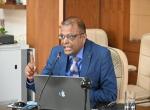
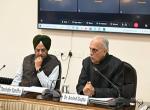
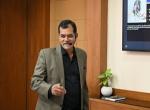
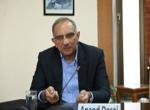
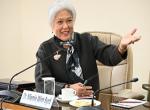
Post new comment